Revolt RV 400 e-Bike: First Look Review
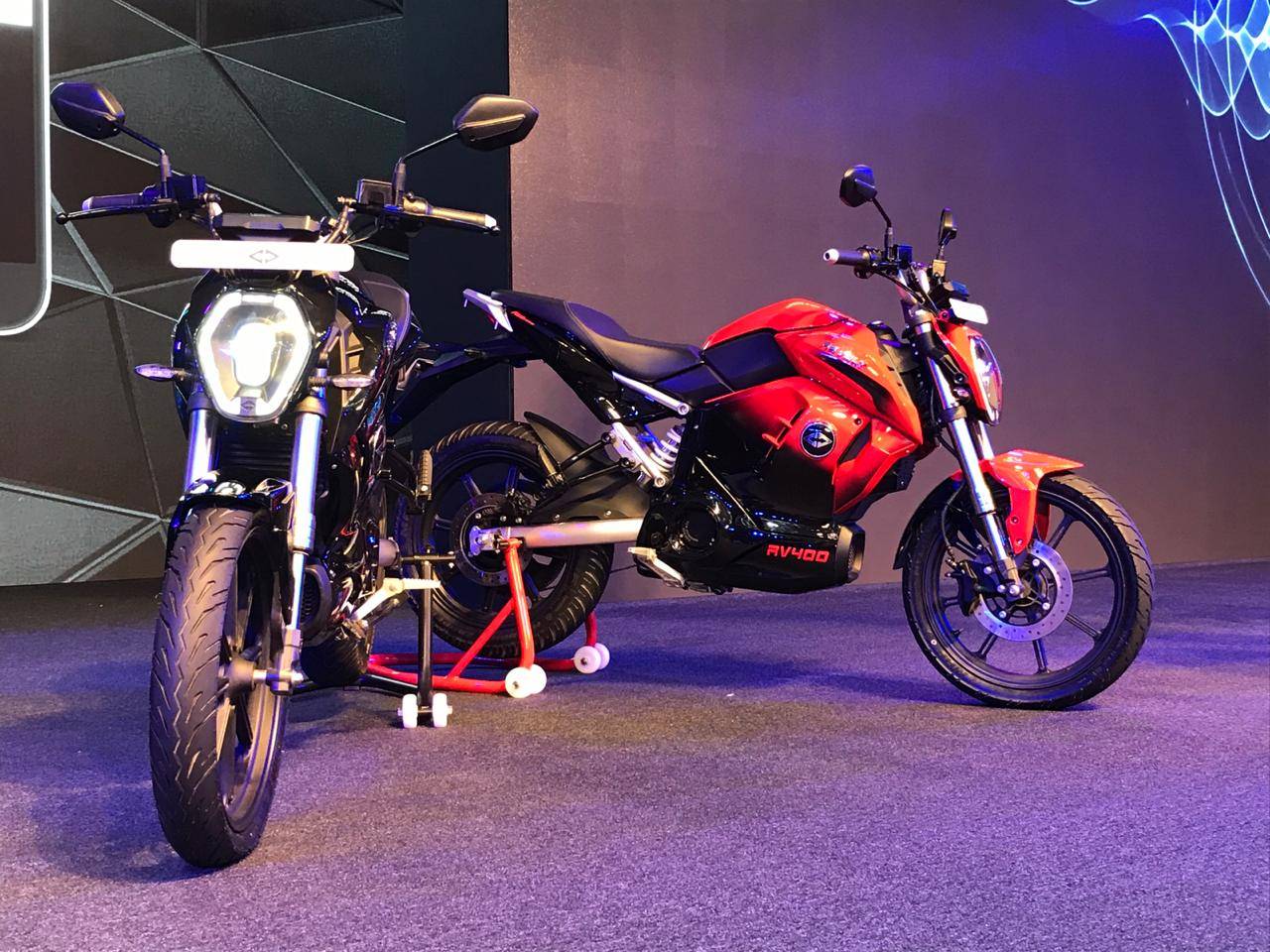
If you’re wondering what Revolt’s newly unveiled electric motorcycle, the RV 400 is all about, this should lay all your doubts to rest

Revolt made headlines in the two-wheeler industry when it unveiled the country’s first electric motorcycle, the RV 400. While we haven’t ridden the bike yet, we got a good look at it and we also have a fair idea about its build quality and features. Here’s all you need to know about India’s first electric motorcycle.
Design:

The Revolt RV 400 looks certainly looks the part of a proper European naked electric motorcycle. Discerning enthusiasts might feel it looks oddly reminiscent of the Super Soco TS which is a Chinese-origin electric bike sold in the UK. That’s because Super Soco is a platform partner for Revolt. It isn’t necessarily a bad thing as this arrangement results in considerable cost savings when compared to designing and developing an electric motorcycle completely from the ground up.
The RV 400 comes with a sleek-looking hexagonal headlamp flowing coherently into the beefed-up tank extensions with vents on the sides. The lack of an air-cooled internal combustion engine has allowed Revolt to slap on full fairing on the sides. There are vents though, which should be enough for air ventilation around the battery, motor and other control electronics. The upper portion of the tank gets a hinged lid through which the battery can be removed. For optimum comfort, the electric bike comes with a single-piece seat and the wide handlebars should ensure good leverage in your city runabouts.

Revolt has opted for an all-LED lighting system which offers the best balance of form, functionality as well as energy efficiency. The instrument cluster is a full LCD unit which shows information like speed, odometer and trip meter readings, battery percentage, ampere readout temperature gauge. Overall plastic quality is pretty decent but it doesn’t feel as solid as the Ather offerings.
Underpinnings:
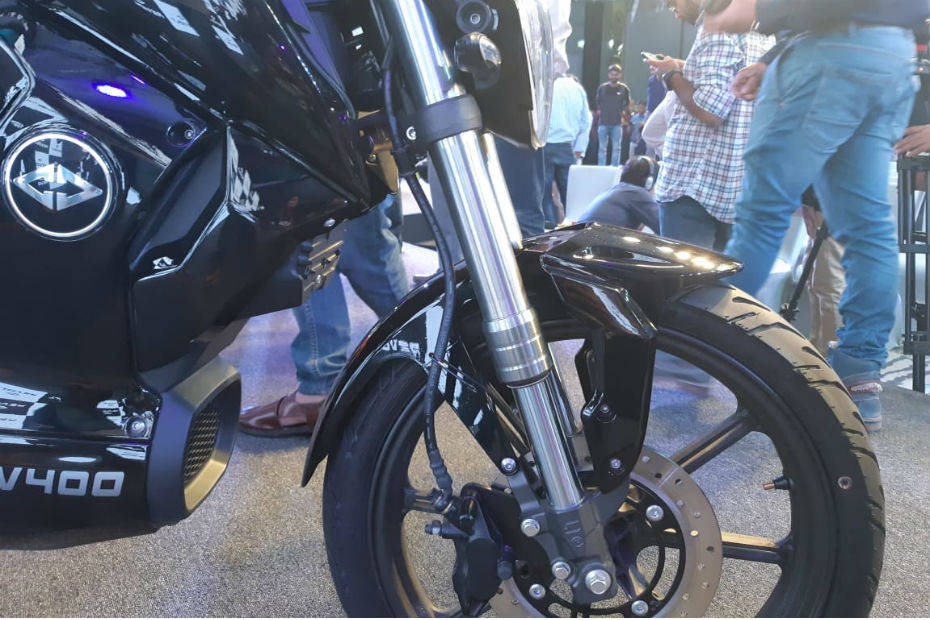
While the frame is likely to be made of steel, the subframe and swingarm have been made out of cast aluminium. The usage of aluminium reduces the weight considerably and we’ve been told that it tips the scales at 102kg (though this is something we’ll need to confirm later on). This is really impressive for an electric motorcycle, and rather important too, as less mass means less energy consumed to move the bike. Up front, the RV gets an inverted fork and the rear packs a monoshock with screw-type preload adjustment like on the Benelli TNT 300. While it is expensive to implement an inverted fork, the primary advantage it offers is reduced unsprung weight, which should result in lower rolling resistance. This means greater efficiency as it takes less energy to move.

The 8-spoke 17-inch alloy wheels look pretty simple and are shod with MRF Nylogrip Zapper FY1 measuring 90/80 up front and the rear packs a 120/80 MRF Nylogrip Zapper C. Brakes include discs on both ends. That being said, the safety norms regarding electric two-wheelers are still a bit of a grey area, but Revolt has offered combined braking system as standard anyway. We’d have loved at least a single-channel ABS though. Ground clearance looks very ample in this motorcycle, which leads us to believe it will barely have any issues going over our pothole-ridden roads. However, we’ll reserve our comments until we get our hands on the bike for a proper road test.
Performance and range:
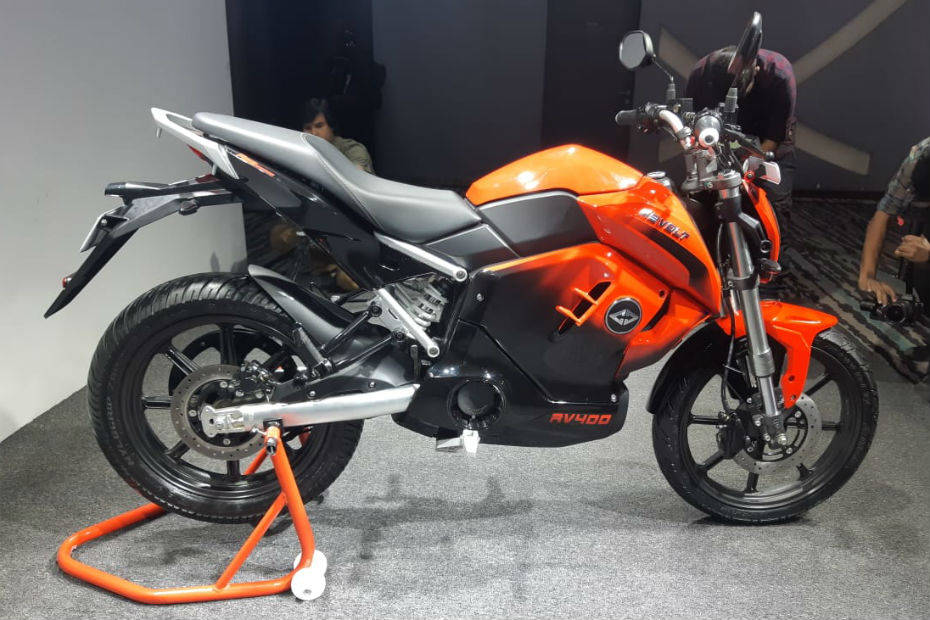
Revolt claims that the RV400’s top speed is capped to 85 kmph, which isn’t bad by electric bike standards. Moreover, the huge pulley with the belt drive at the rear certainly makes us feel that there will be plenty of torque at the rear wheel, allowing acceleration to be quite brisk, at least theoretically. The startup hasn’t revealed the specifications of the battery or the electric motor yet, but what we know so far is that the battery is a 3.2kWh lithium-ion unit. That’s 0.8kWh more than the Ather 450’s battery.
The ARAI-certified range stands at a healthy 156km, which is the highest among any electric two-wheeler sold in India at present. You also get three riding modes: Eco, City and Sport. Expect the range to be the highest in Eco mode, and that’s likely to come at a compromise of performance. City mode should give you the best balance of power and range whereas Sport mode will focus all the available power reserves for the sake of maximum performance.
Multiple ways to charge:
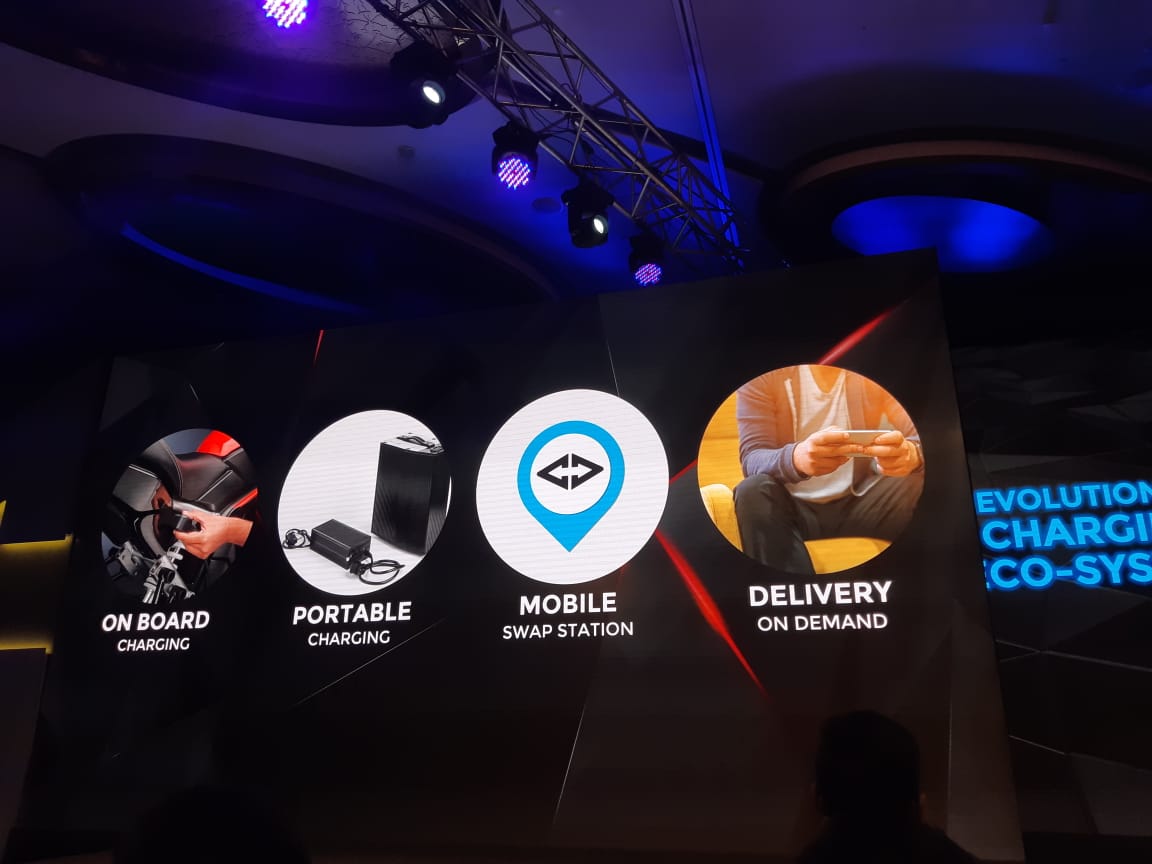
The Revolt RV 400’s battery uses a 15amp socket to charge and it takes about 4 hours to charge up fully. One can charge the bike using the socket in the motorcycle itself. Alternatively, one can remove the battery and charge it up. The brand claims the battery can be swapped in under a minute.
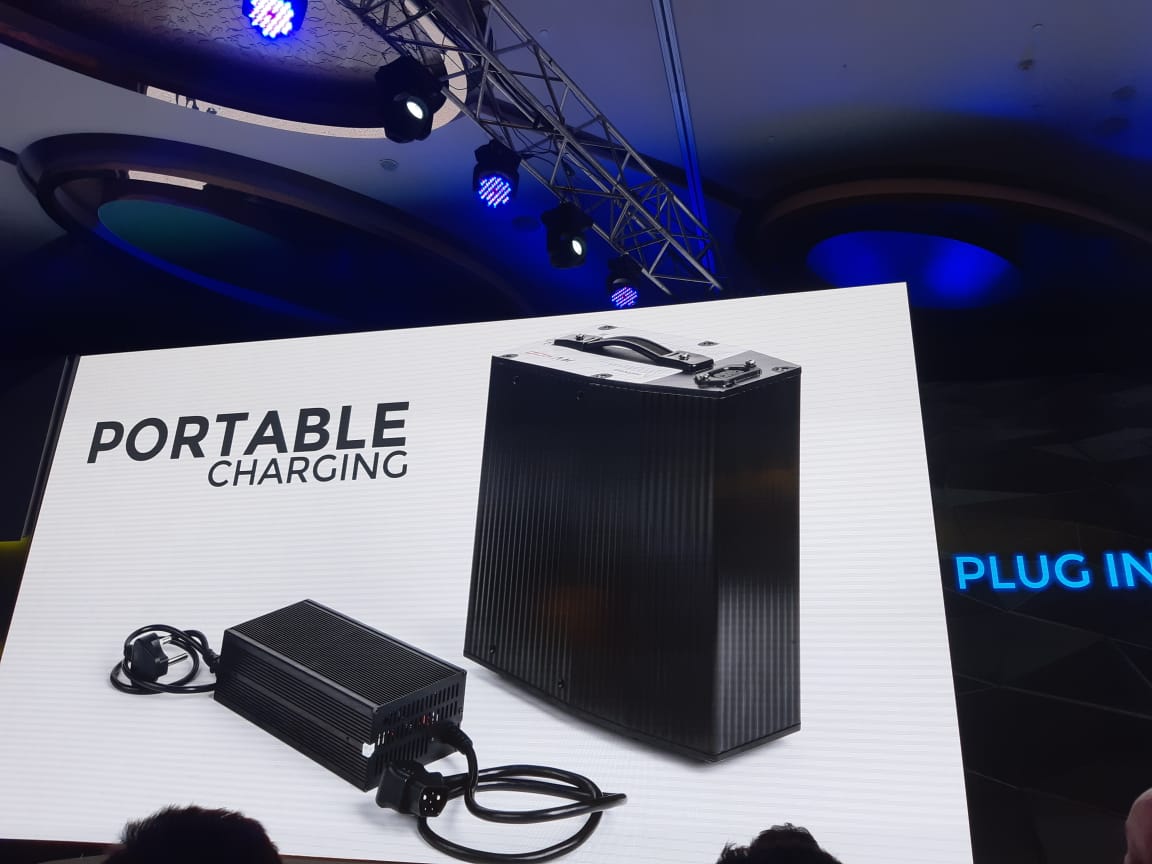
Revolt also offers the option to swap batteries at designated ‘Mobile Swap Stations’ which will be setup across the city based on demand. Moreover, the brand also offers to simply deliver a fresh battery at the location of your choosing via the Revolt app. The battery can be booked in advance, and the delivery is authenticated via a QR code and is paid via the app itself. More details about the app below:
Revolt App:
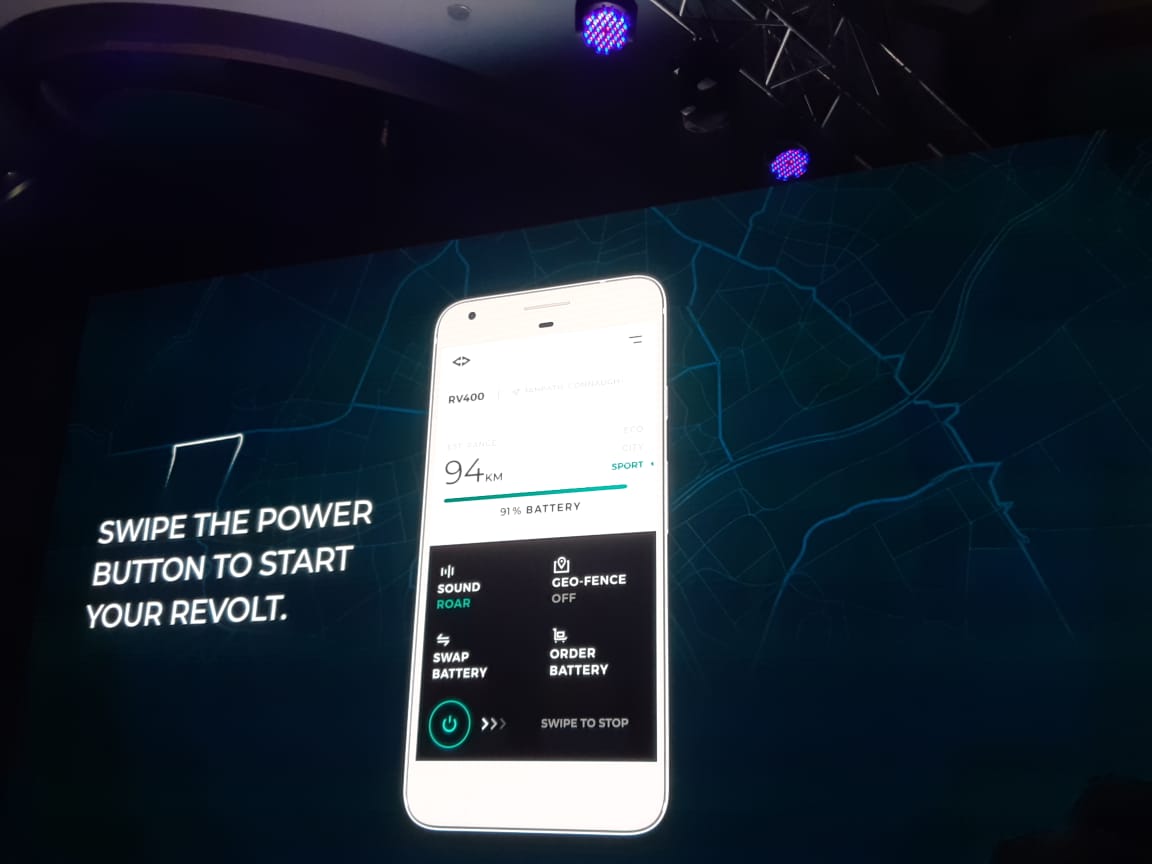
The biggest party trick is the Revolt App. This app will be available to download on both IOS and Android platforms from July. It reads data collected by the 4G enabled Internet Of Things device in the motorcycle and performs a variety of functions. For starters, the app shows the motorcycle’s parked location with a map guide. It also shows real-time information like battery level, estimated range in different modes and owners will be able to start or stop their bikes using the app as well. Users can access trip details via the app and can also set timed geo-fencing parameters - basically you can set a radius around your parked RV400 (from zero to 50km), and if the bike leaves that, you’ll get a warning on the app. In a nutshell, Revolt has used a relatively simpler cost-effective instrument console on the bike and has made use of the phone’s display prowess to show all the relevant information. All said and done, we’re yet to see how glitch-free the motorcycle-app connection and the user interface is.

Another interesting feature the app offers is the ability to choose an artificial “Engine note” in the motorcycle. There are four options available to choose from, and more sounds can be downloaded too. It might catch the fancy of some but we feel this is a bit too gimmicky.
Availability & Verdict:
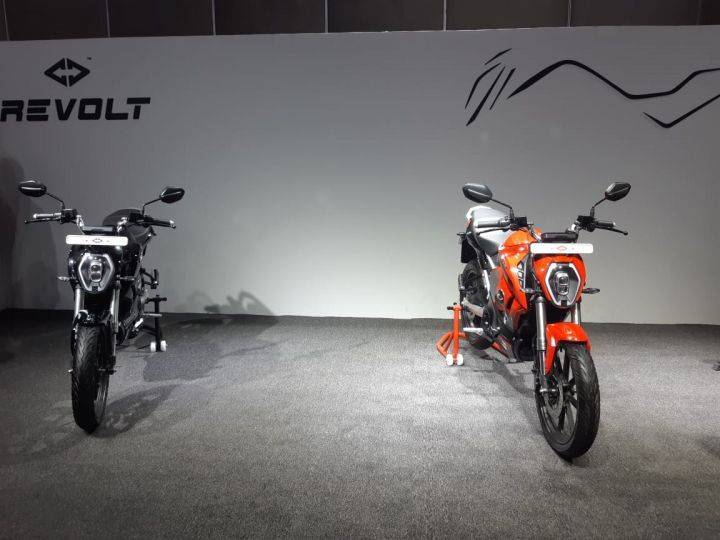
Pre-bookings will commence from June 25 in Revolt’s official website as well as on Amazon. The token amount stands at Rs 1000 and Revolt will be announcing the price of the RV 400 on July 22. We believe it will bear a price tag of about Rs 1 lakh (on-road). The brand will introduce the bike first in Delhi, followed by NCR, Pune, Bengaluru, Hyderabad, Nagpur, Ahmedabad, Chennai in the next four months.
Also Read: Revolt To Introduce Helmet With Voice Commands
At least going by the features claimed and the range it offers, the Revolt RV 400 seems to be a promising proposition in the burgeoning electric vehicle segment. It could be an ideal motorcycle for your daily commutes, complementing good ‘ol petrol powered fun on weekends. However, we’ll be able to judge this motorcycle properly only after the first ride, which is scheduled in mid-July.

















